GALAPAGOS ISLANDS, ECUADOR - APRIL 2007
Page 3 of 9 - Link to Page 4 at the bottom of this page
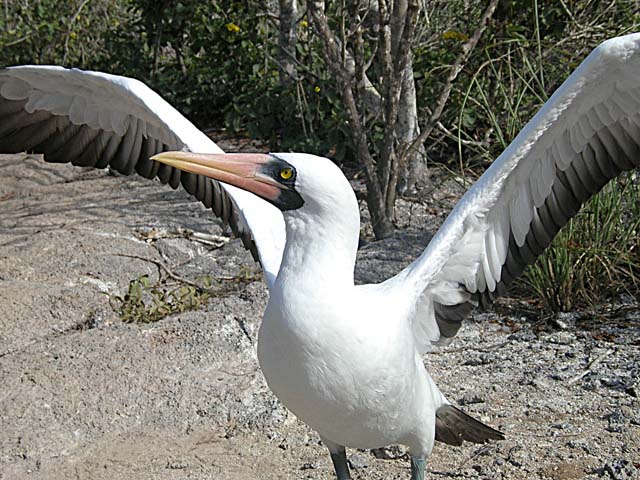
A Nazca booby spreading its wings
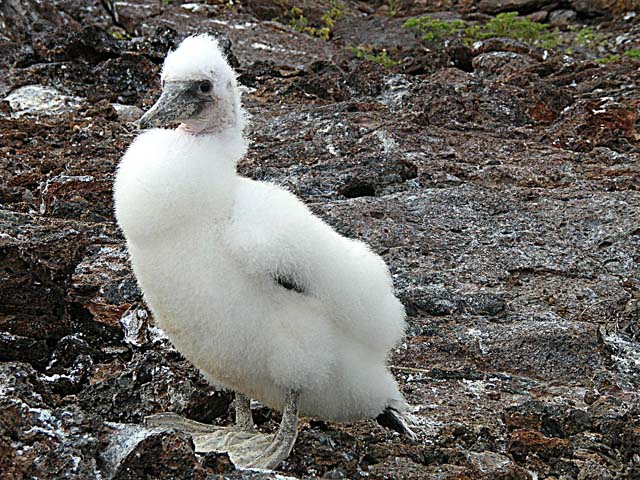
Baby Nazca booby - with their white fur, the babies sometimes look larger than their parents
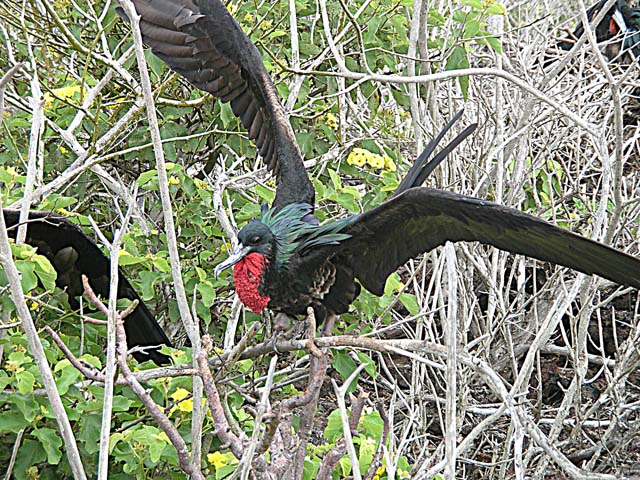
Male great frigatebird - Courtship of females is spectacular as several males sit close together
and inflate their scarlet pouches, lifting their heads and moving their wings to attract females
flying overhead and surveying their options. The mated pair build
a nest of twigs in low trees or shrubs.
A single egg is incubated by both parents.
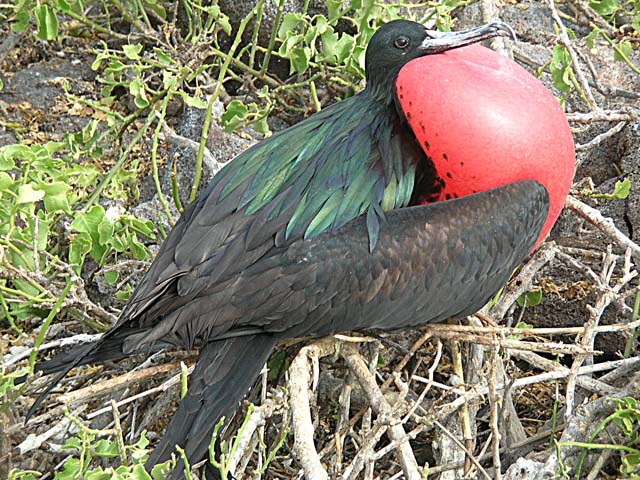
A male frigatebird with his red pouch fully inflated, which takes about 20 minutes to do. There are 2 types
of frigatebirds in the Galapagos that are hard to tell apart. The males that have a greenish back are great
frigatebirds; the males that have a purplish back are magnificent frigatebirds.
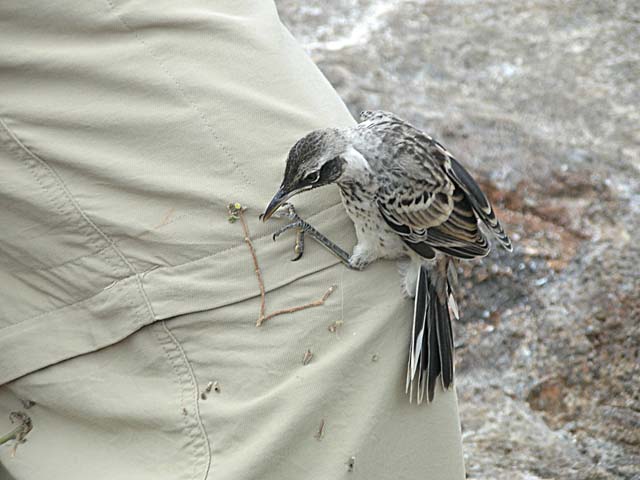
A Galapagos Mockingbird landed on Shirley's hiking pants, attracted by the twigs clinging to them
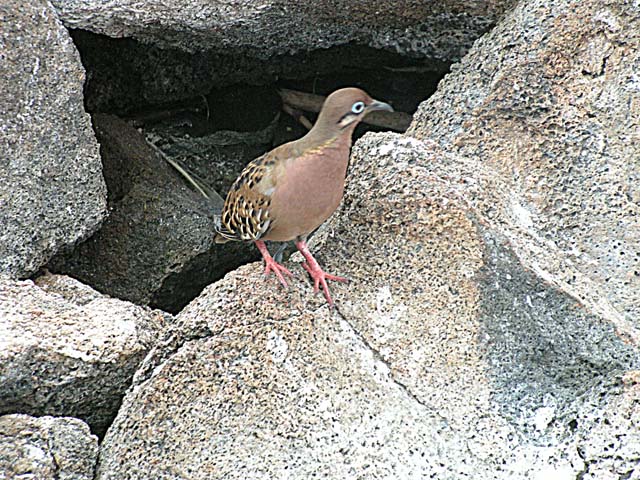
Galapagos Dove
- it feeds on whatever is most readily available and is a reluctant flier
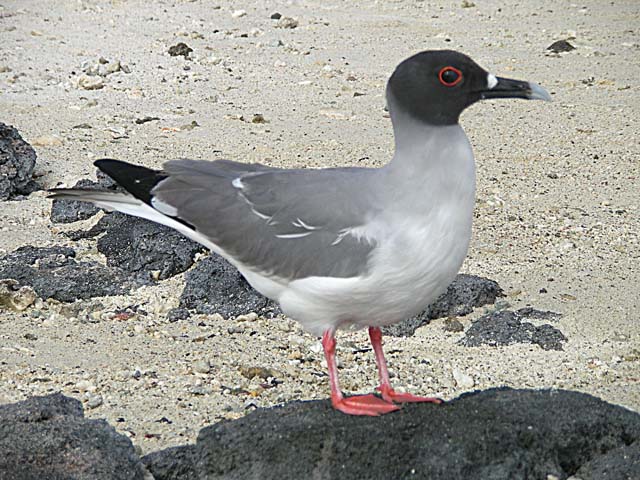
Swallow-tailed gull - the adults have a black head with a scarlet ring around the eye.
The bill is black with a gray tip and a white spot at the base of the upper mandible. Legs
and webbed feet are red.
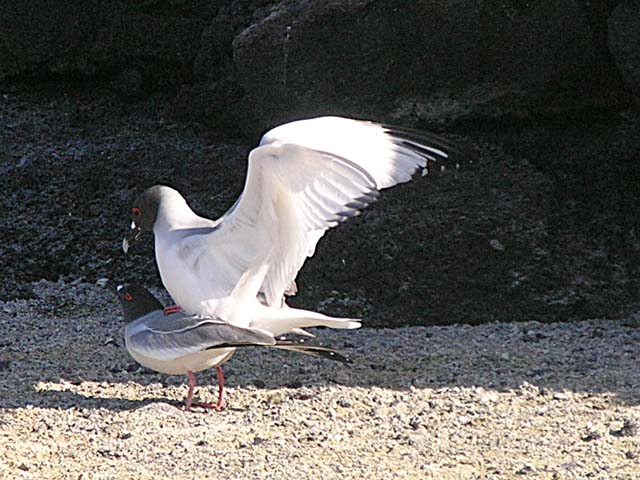
Swallow-tailed gulls mating. In the Galapagos, many birds mate and sit on eggs with little apparent
concern about humans standing nearby on the marked trails.
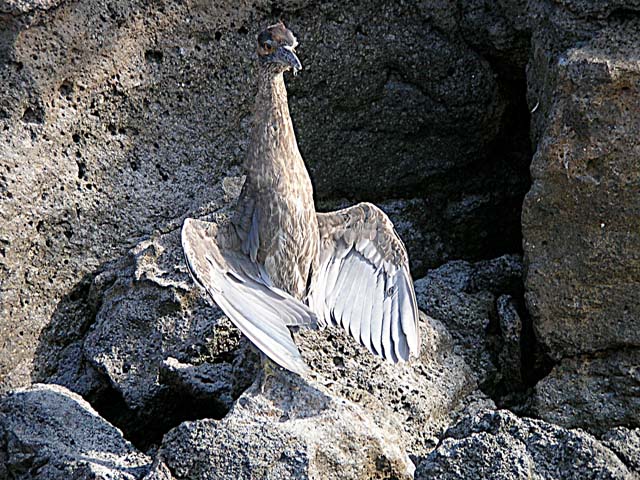
Yellow-crowned Night Heron - body is mainly gray
with brown and black feathers. This is the immature bird
with gray-brown
all over with a dark bill and orange-brown legs. Both adults and immature
often stand on one leg. The adult has a broad white stripe running from the
underside of the eye and a cream-colored crown. Eyes for both are orange.
Link to Page Four of Galapagos
Pat's Home Page